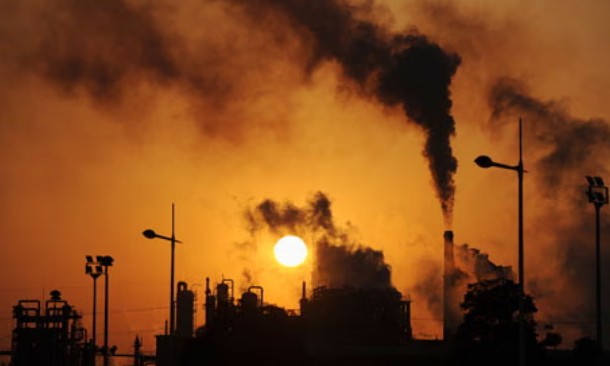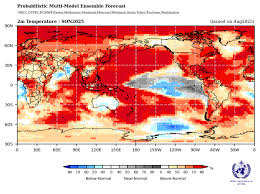
| Published September 5, 2025
The IPCC is 95 percent confident that humans are the main cause of the current global warming. Photograph: Jianan Yu/Reuters
| Published September 4, 2025
Questioning the Certainty: A Skeptic’s Feature on IPCC AR6
Introduction: The Hype of Consensus
Every few years, the Intergovernmental Panel on Climate Change (IPCC) delivers a new report, packaged as the “gold standard” of climate science. AR6, released between 2021 and 2023, is no exception—its findings are hailed as definitive, its warnings amplified by media, and its recommendations cited in political debates worldwide. But beneath the polished messaging lies a fundamental question: is this scientific consensus as conclusive as advertised, or does the political process of producing these reports inflate certainty and downplay doubt? For skeptics, the very process—where governments edit the final “Summary for Policymakers”—is reason enough to question how objective the presentation truly is.
Claim: “Human-Caused Warming Is Unambiguous”—But Is It Overstated?
AR6 declares with unprecedented confidence that human activity has “unequivocally” warmed the Earth. This is a powerful headline, but skeptics highlight that such language risks ignoring ongoing scientific debate about climate sensitivity, feedback mechanisms, and natural variability. For example, cloud formation, solar cycles, and ocean currents remain only partially understood, yet the models assign heavy weight to CO₂. By portraying uncertainty as near-certainty, the IPCC may oversimplify a complex system that resists neat conclusions.
Forecasts of Extreme Weather: Probabilities vs. Realities
The report warns that heatwaves, floods, and hurricanes will intensify as the climate warms. While extreme weather is a natural part of Earth’s history, AR6 suggests human activity is now the primary driver. Skeptics, however, caution against attributing every storm or wildfire to climate change. Statistical projections are not the same as observed reality. Some regions have seen fewer hurricanes or no clear trend in droughts, yet the models emphasize global averages and probabilities. The risk, critics argue, is that policymakers mistake computer forecasts for guaranteed futures.
The 1.5 °C Threshold: A Red Line or a Flexible Target?
AR6 highlights 1.5 °C of warming as a critical tipping point, suggesting dire consequences if humanity crosses it. But skeptics question whether this is more of a political benchmark than a hard scientific threshold. After all, Earth’s climate has warmed and cooled far more dramatically over geological timescales, often without human involvement. Critics argue that the “1.5 °C red line” may serve more as a rallying cry for urgent policy than a precise scientific danger zone. Some even suggest that the planet could adapt within this range more easily than alarmist projections imply.
Impacts, Adaptation & Resilience: Are We Pessimistic or Realistic?
WGII paints a bleak picture—collapsing ecosystems, food insecurity, and mass displacement. Yet skeptics point out that the report often assumes the worst while underplaying human adaptability. Agriculture, technology, and urban planning have historically adjusted to changing climates, and many communities are already building resilience against extremes. For instance, while coral reefs are indeed under stress, not all ecosystems respond uniformly, and adaptation strategies exist. By emphasizing vulnerability while minimizing adaptability, AR6 may inadvertently spread fear rather than foster pragmatic solutions.
Mitigation Pathways: Idealized or Impractical?
WGIII promotes rapid decarbonization as not only necessary but feasible, suggesting that global emissions could be cut nearly in half by 2050. To skeptics, these scenarios are built on utopian assumptions: flawless international cooperation, massive investments in renewable energy, and behavioral changes at a global scale. But real-world politics rarely align with such idealism. Developing nations, still struggling with poverty and energy needs, may find these pathways unrealistic if they sacrifice growth. Instead of presenting practical options, AR6 often prescribes sweeping transformations that ignore economic and political realities.
Synthesis Report: Integrating, Not Critically Evaluating
The final synthesis is designed to “pull everything together” for policymakers, but skeptics note that integration can also mean oversimplification. In the drive to deliver a unified message, nuance gets lost. Differing interpretations, ongoing debates, or minority scientific views often vanish in favor of a single narrative: urgent action is required now. While simplification helps politicians, it may distort the true level of scientific uncertainty and mislead the public into believing that all questions are settled when they are not.
IPCC’s Conservative Bias—or Political Necessity?
Interestingly, the IPCC has been accused from both sides: alarmists say it is too cautious, while skeptics argue it overstates certainty. But one fact remains—its very structure depends on government consensus. Each line of the summary must be approved by member states, meaning politics inevitably shapes science. To skeptics, this raises the concern that what emerges is not pure science but science filtered through diplomacy. The result is a report that may project more certainty than the underlying data truly allows, driven as much by political necessity as scientific rigor.
👩🏫 Lesson: What Judith Curry is Saying About Climate Science
1. Who is Judith Curry?
Judith Curry is a climate scientist and former professor at Georgia Tech. She’s not someone denying climate change—she accepts that the Earth is warming and that humans play a role. But she is skeptical about how the science is being communicated and politicized.
2. What does she mean by “hijacked by alarmists”?
Curry argues that the way climate science is presented to the public often emphasizes alarm and certainty instead of debate and nuance.
Think of it like this:
-
In science, you’re supposed to say “Here’s what we know, here’s what we don’t know, and here’s where we’re unsure.”
-
But in politics and media, the message gets simplified to “We know for sure, and disaster is coming unless we act now.”
She believes this shift discourages open discussion about uncertainty.
3. Consensus vs. Critical Thinking
The IPCC (the UN’s climate panel) often uses the idea of “consensus”—that scientists overwhelmingly agree.
-
Curry’s point: Consensus is not the same as truth.
In her view, when science is forced into consensus, it can silence minority opinions, even if those opinions are scientifically valid.
As a teacher, I’d compare it to a class where everyone agrees on the “safe answer” for a group project, but a few students have strong evidence for a different angle. Their voices might get ignored because the group wants unity.
4. The Role of Politics
Curry explains that politics influences how climate reports are written. Governments literally edit the summaries, so the final product is not just science—it’s science shaped for policy.
She warns this blurs the line between evidence and advocacy.
5. Why does this matter?
For Curry, it matters because:
-
Overstating certainty might cause public distrust if predictions don’t match reality.
-
Alarmist framing may push policies that are expensive or impractical.
-
Ignoring uncertainty reduces scientific honesty.
📌 Takeaway for You from the video
The video is less about denying climate change and more about how science is communicated. Curry is teaching us:
-
Always separate what we know from what we don’t know yet.
-
Question whether the message is shaped more by science or by politics.
-
Remember that disagreement in science is not a weakness—it’s how knowledge grows.





Be the first to comment